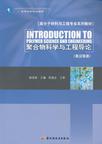聚合物科学与工程导论
出版时间:2010-8 出版社:中国轻工业出版社 作者:揣成智 主编 页数:233
前言
为了贯彻教育部2001年(教高[2001]4号)《关于加强高等学校本科教学工作提高教学质量的若干意见》中关于“本科教育要创造条件使用英语等外语进行公共课和专业课教学”的文件精神,为了适应高等院校“高分子材料与工程”及相关专业教育的蓬勃发展和教育改革的不断深化,许多学校在高分子材料与工程专业教学中开始用双语教学替代原有的专业英语教学。这种双语教学不是简单的就英语而学英语,而是通过英语来学习专业知识。将专业英语学习与专业知识学习融合在一起的方法有利于为学生第一时间用英语阅读和吸收英语原版专业科技信息打下基础,有利于增强他们用英语进行专业交流的实际能力。然而,目前各学校的双语教学都处在摸索阶段,尚缺少能全面反映高分子材料与工程学科特点、内容适当、系统性强、可供学生和专业技术人员选用的高分子材料与工程双语教材,影响了本专业双语教学水平的提高及规范化。 本教材是为适应高等院校“高分子材料与工程”及相关专业实施双语教学而编写的,其特点为课文全部选用英文原版经典教材,课文语言标准、简洁、易懂,在内容上力求反映高分子材料与工程学科的特点和进展。同时,由于全书选用英文原版教材,本书将保留原文中的英制单位,请读者自行换算。 本教材选材力求在有限的篇幅内尽可能涵盖高分子材料与工程的学科领域。全书分为六个单元共36课,内容涉及聚合物发展史、聚合物科学基本概念、聚合物基础知识、聚合物合成、聚合物性能、聚合物材料、聚合物加工工艺。涵盖了高分子化学、高分子物理、聚合物合成、高分子材料及其性能、聚合物加工等方面的内容,该教材反映了近年该领域的发展,使学生真正领会英文原版教材中专业知识的精髓。 本教材课文全部使用规范的高分子材料与工程专业的现代语言,概念清楚,定义准确,层次分明,语言流畅简洁,适教适学。课文阅读取材丰富,形式灵活,图文并茂、直观生动、深入浅出,简明易懂。
内容概要
本教材选材力求在有限的篇幅内尽可能涵盖高分子材料与工程的学科领域。全书分为六个单元共36课,内容涉及聚合物发展史、聚合物科学基本概念、聚合物基础知识、聚合物合成、聚合物性能、聚合物材料、聚合物加工工艺。涵盖了高分子化学、高分子物理、聚合物合成、高分子材料及其性能、聚合物加工等方面的内容,该教材反映了近年该领域的发展,使学生真正领会英文原版教材中专业知识的精髓。可供学生和专业技术人员选用的高分子材料与工程双语教材。
书籍目录
PART 1 INTRODUCTION Lesson 1 Introduction to History of Polymer Science History of Macromolecular Science Lesson 2 Basic Concepts of Polymer Science Basic Concepts of PolymersPART 2 POLYMER FUNDAMENTALS Lesson 3 Types of Polymers Chemistry of Synthesis Lesson 4 Structure of Synthesis Bonding in Polymers Lesson 5 Polymer Morphology Characterization of Polymer Molecular Weight Lesson 6 Polymer Solutions and Solubility The Thermodynamic Basis of Polymer Solubility and the Solubility Parameter Lesson 7 Transitions in Polymers Orientation and drawing of PolymerPART 3 POLYMER SYNTHESIS Lesson 8 Step-Growth (Condensation) Polymerization Step Reaction Polymerization Lesson 9 Free-Radical Addition (Chain-Growth) Chain Reaction Polymerization Lesson 10 Emulsion Polymerization(1) Emulsion Polymerization (2) Lesson 11 Ionic Polymerization Bulk PolymerizationPART 4 POLYMER PROPERTIES Lesson 12 Rubber Elasticity Purely Viscous Flow Lesson 13 Flow Curves of Polymer Fluid Time-Dependent Fluid Behavior Lesson 14 Polymer Melts and Solutions Creep and Stress Relaxation of Polymer Lesson 15 Linear Viscoelasticity of Polymer Time-Temperature Superposition of Polymer ……PART 5 POLYMER MATERIALSPART 6 POLYMER MOLDING AND PROCESSINGGlossaryPhrases and ExpressionsReferences
章节摘录
It was noted that certain polymers would soften upon heating, and could then be made to flow when a stress was applied. When cooled again, they would reversibly regain their solid or rubbery nature. These polymers are known as thermoplastics. By analogy, ice and solder, though not polymers, behave as thermoplastics. Thermoplastic polymers are characterized by softening upon heating and hardening by cooling. Since the giant molecules of these materials have no strong bonds between the individual molecules, they can be softened by heat and remolded over and over again. This is an advantage in molding processes such as extrusion or injection where scrap or rejected products can be reground and molded again. Some of the thermoplastic materials will burn freely when exposed to an open flame while others of this group will not suooort combustion.
图书封面
评论、评分、阅读与下载
用户评论 (总计4条)
- 书英汉对照,可以学到专业,还有外语
- 专业英语课本,挺难得
- 内容不是太难,适合入门了解
- 内容相当不错的
